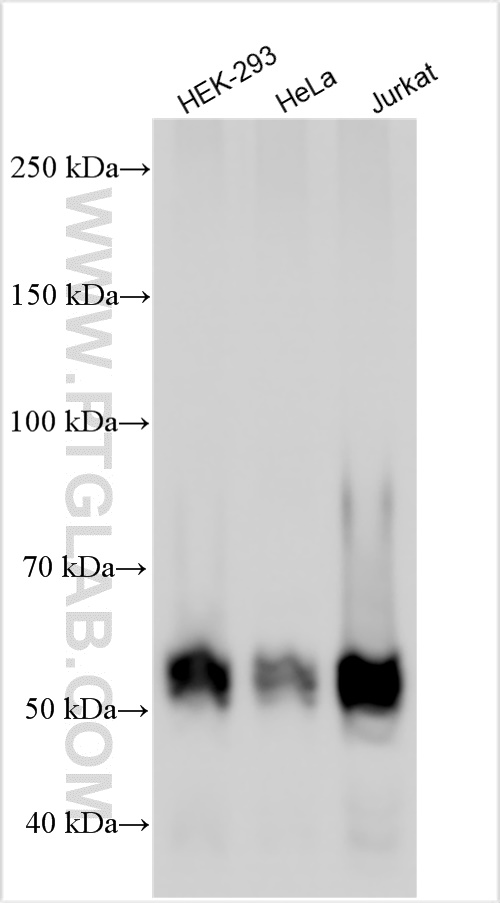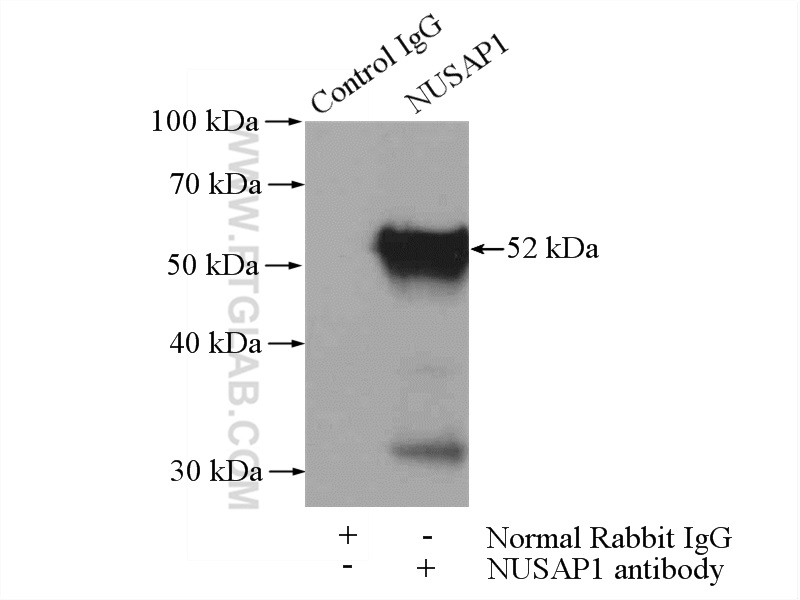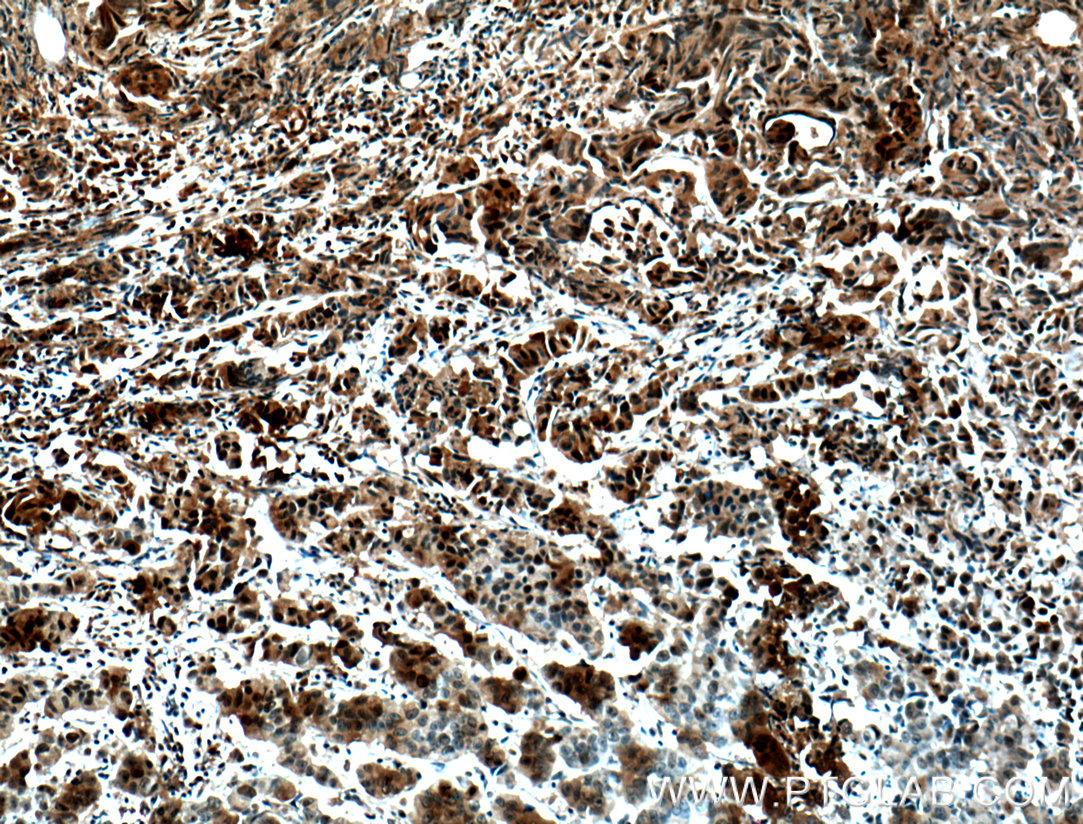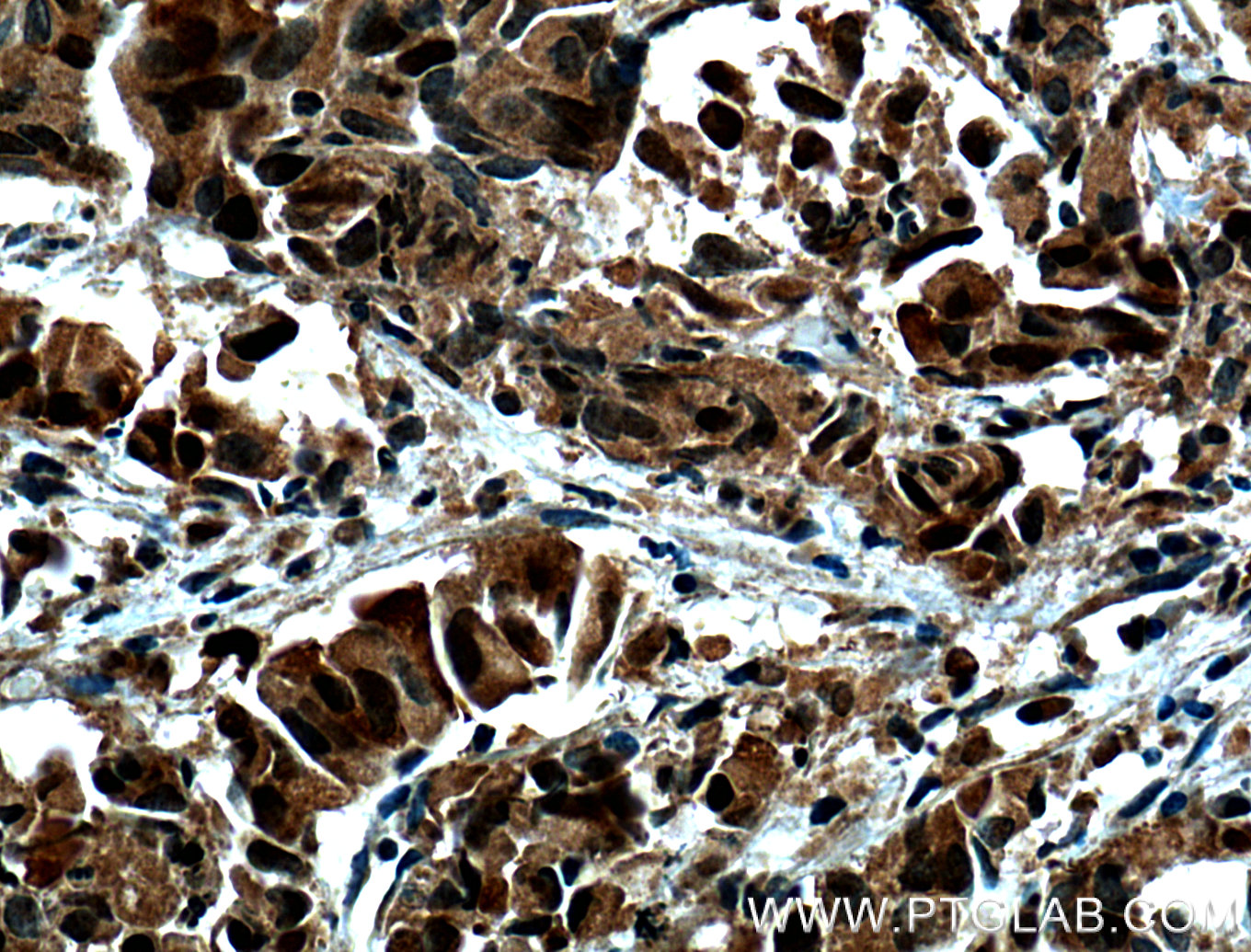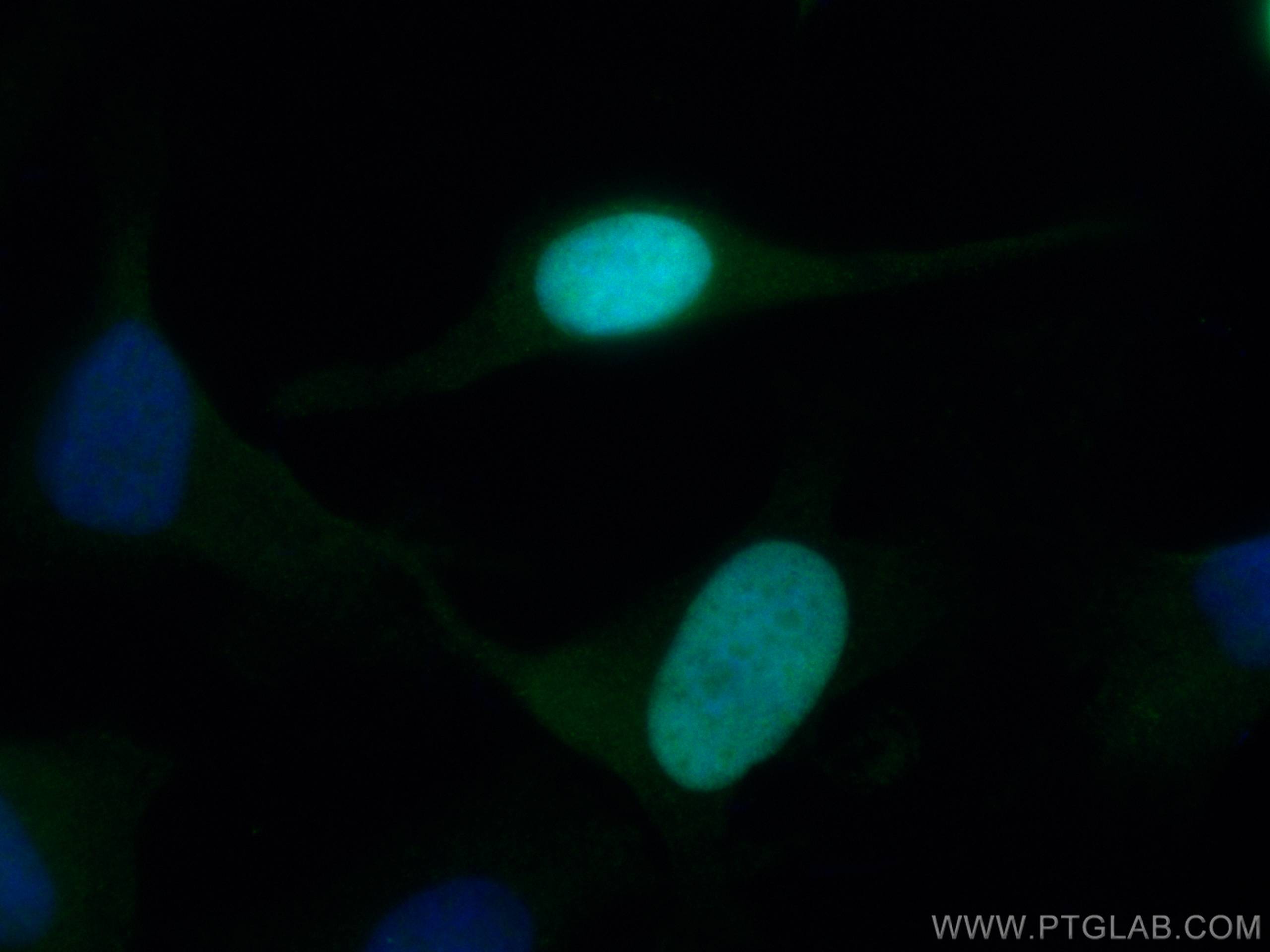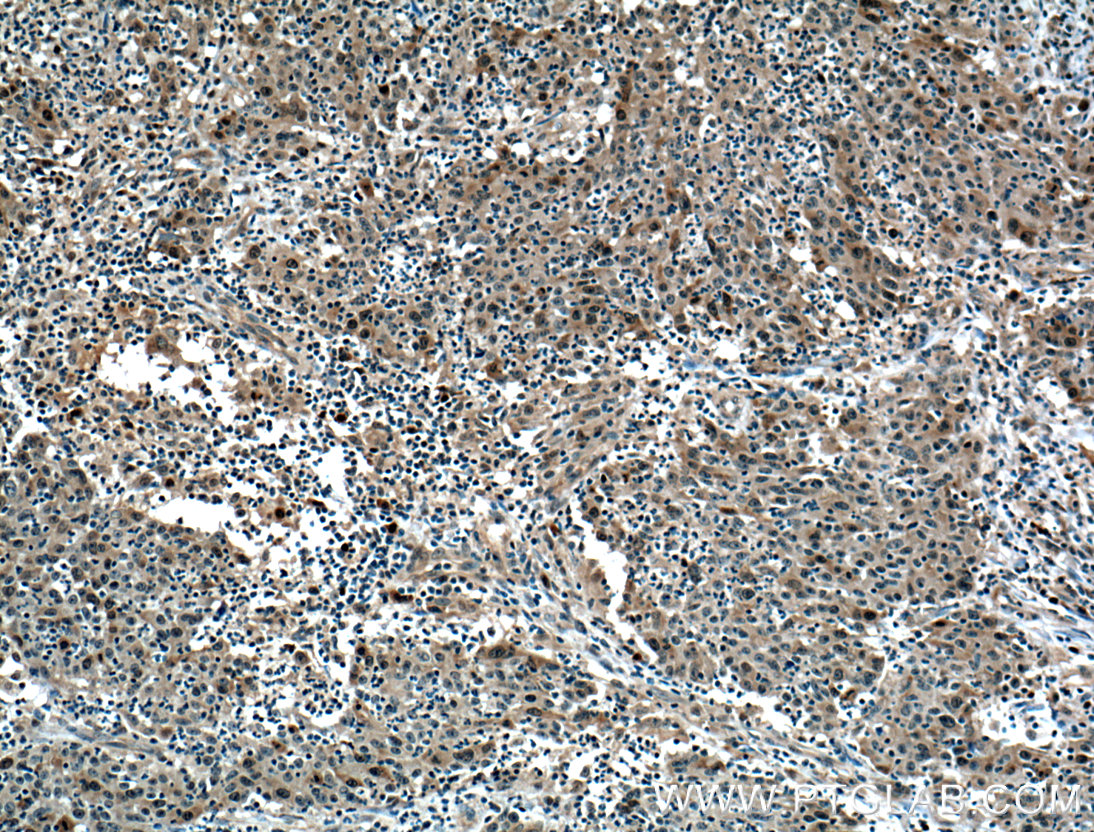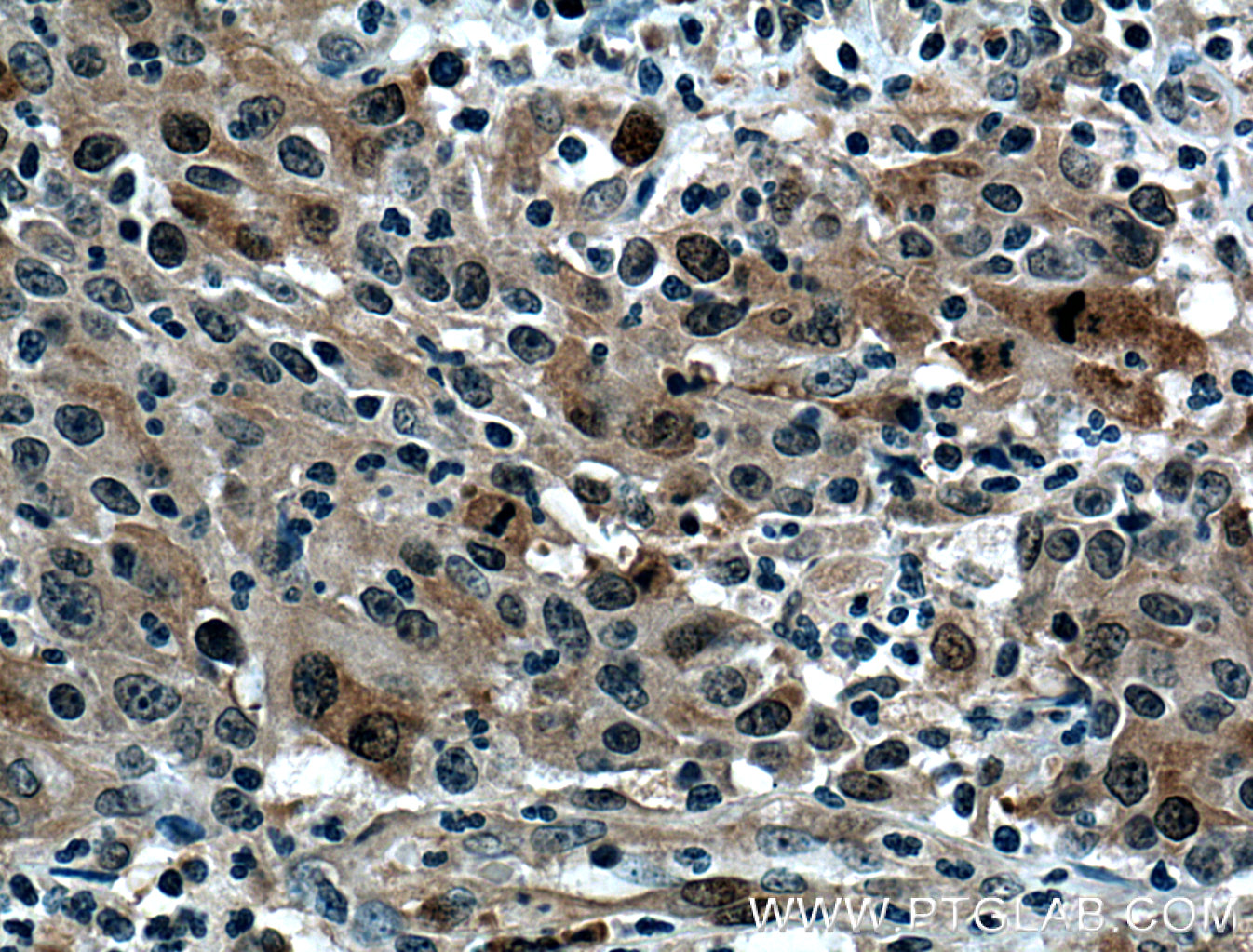验证数据展示
经过测试的应用
| Positive WB detected in | HEK-293 cells, HeLa cells, Jurkat cells |
| Positive IP detected in | HeLa cells |
| Positive IHC detected in | human prostate cancer tissue, human colon cancer tissue Note: suggested antigen retrieval with TE buffer pH 9.0; (*) Alternatively, antigen retrieval may be performed with citrate buffer pH 6.0 |
| Positive IF/ICC detected in | HeLa cells |
推荐稀释比
| 应用 | 推荐稀释比 |
|---|---|
| Western Blot (WB) | WB : 1:5000-1:50000 |
| Immunoprecipitation (IP) | IP : 0.5-4.0 ug for 1.0-3.0 mg of total protein lysate |
| Immunohistochemistry (IHC) | IHC : 1:50-1:500 |
| Immunofluorescence (IF)/ICC | IF/ICC : 1:50-1:500 |
| It is recommended that this reagent should be titrated in each testing system to obtain optimal results. | |
| Sample-dependent, Check data in validation data gallery. | |
产品信息
12024-1-AP targets NUSAP1 in WB, IHC, IF/ICC, IP, ELISA applications and shows reactivity with human samples.
| 经测试应用 | WB, IHC, IF/ICC, IP, ELISA Application Description |
| 文献引用应用 | WB, IHC, IF, IP |
| 经测试反应性 | human |
| 文献引用反应性 | human, mouse, rat |
| 免疫原 |
CatNo: Ag2654 Product name: Recombinant human NUSAP1 protein Source: e coli.-derived, PGEX-4T Tag: GST Domain: 1-440 aa of BC001308 Sequence: MIIPSLEELDSLKYSDLQNLAKSLGLRANLRATKLLKALKGYIKHEARKGNENQDESQTSASSCDETEIQISNQEEAERQPLGHVTKTRRRCKTVRVDPDSQQNHSEIKISNPTEFQNHEKQESQDLRATAKVPSPPDEHQEAENAVSSGNRDSKVPSEGKKSLYTDESSKPGKNKRTAITTPNFKKLHEAHFKEMESIDQYIERKKKHFEEHNSMNELKQPINKGGVRTPVPPRGRLSVASTPISQRRSQGRSCGPASQSTLGLKGSLKRSAISAAKTGVRFSAATKDNEHKRSLTKTPARKSAHVTVSGGTPKGEAVLGTHKLKTITGNSAAVITPFKLTTEATQTPVSNKKPVFDLKASLSRPLNYEPHKGKLKPWGQSKENNYLNQHVNRINFYKKTYKQPHLQTKEEQRKKREQERKEKKAKVLGMRRGLILAED 种属同源性预测 |
| 宿主/亚型 | Rabbit / IgG |
| 抗体类别 | Polyclonal |
| 产品类型 | Antibody |
| 全称 | nucleolar and spindle associated protein 1 |
| 别名 | ANKT, BM037, BM-037, LNP, Nucleolar and spindle-associated protein 1 |
| 计算分子量 | 440 aa, 49 kDa |
| 观测分子量 | 49-60 kDa |
| GenBank蛋白编号 | BC001308 |
| 基因名称 | NUSAP1 |
| Gene ID (NCBI) | 51203 |
| RRID | AB_2157789 |
| 偶联类型 | Unconjugated |
| 形式 | Liquid |
| 纯化方式 | Antigen affinity purification |
| UNIPROT ID | Q9BXS6 |
| 储存缓冲液 | PBS with 0.02% sodium azide and 50% glycerol, pH 7.3. |
| 储存条件 | Store at -20°C. Stable for one year after shipment. Aliquoting is unnecessary for -20oC storage. |
背景介绍
NUSAP1, also named as ANKT, belongs to the NUSAP family. It is microtubule-associated protein with the capacity to bundle and stabilize microtubules. NUSAP1 may associate with chromosomes and promote the organization of mitotic spindle microtubules around them. NUSAP1 plays a role in connecting apoptosis with cell migration and it is a potentially involved in morphogenesis in vertebrates (PMID:21203972). NUSAP1 is an immunogenic antigen in 65% of patients with AML following allogeneic HCT and suggests a tumor antigen role(PMID:20053754 ). NuSAP1 protein level is tightly regulated by the APC/C ubiquitin ligase complex and NuSAP induces mitotic arrest dependent of its microtubule affinity (PMID:17618083). NUSAP1 is overexpressed in pituitary adenomas.
实验方案
| Product Specific Protocols | |
|---|---|
| IF protocol for NUSAP1 antibody 12024-1-AP | Download protocol |
| IHC protocol for NUSAP1 antibody 12024-1-AP | Download protocol |
| IP protocol for NUSAP1 antibody 12024-1-AP | Download protocol |
| WB protocol for NUSAP1 antibody 12024-1-AP | Download protocol |
| Standard Protocols | |
|---|---|
| Click here to view our Standard Protocols |
发表文章
| Species | Application | Title |
|---|---|---|
Gastroenterology microRNA 193a-5p Regulates Levels of Nucleolar- and Spindle-Associated Protein 1 to Suppress Hepatocarcinogenesis. | ||
Mol Cell Regulated degradation of spindle assembly factors by the anaphase-promoting complex. | ||
J Exp Med Single-cell transcriptome analysis reveals differential nutrient absorption functions in human intestine. | ||
Acta Neuropathol Transcriptome analysis of MENX-associated rat pituitary adenomas identifies novel molecular mechanisms involved in the pathogenesis of human pituitary gonadotroph adenomas. |

